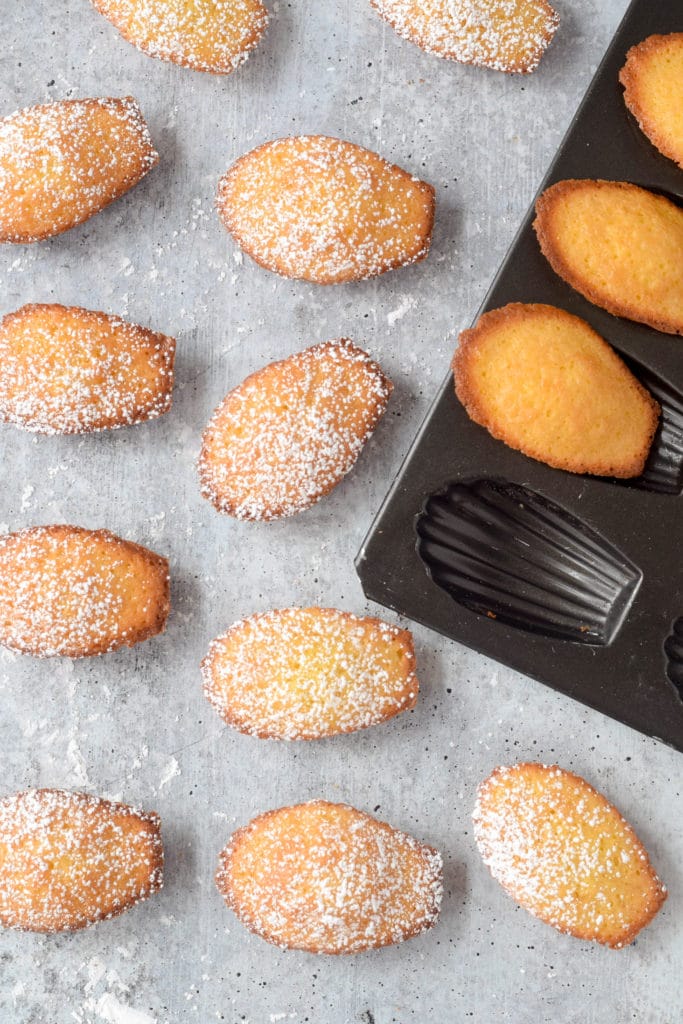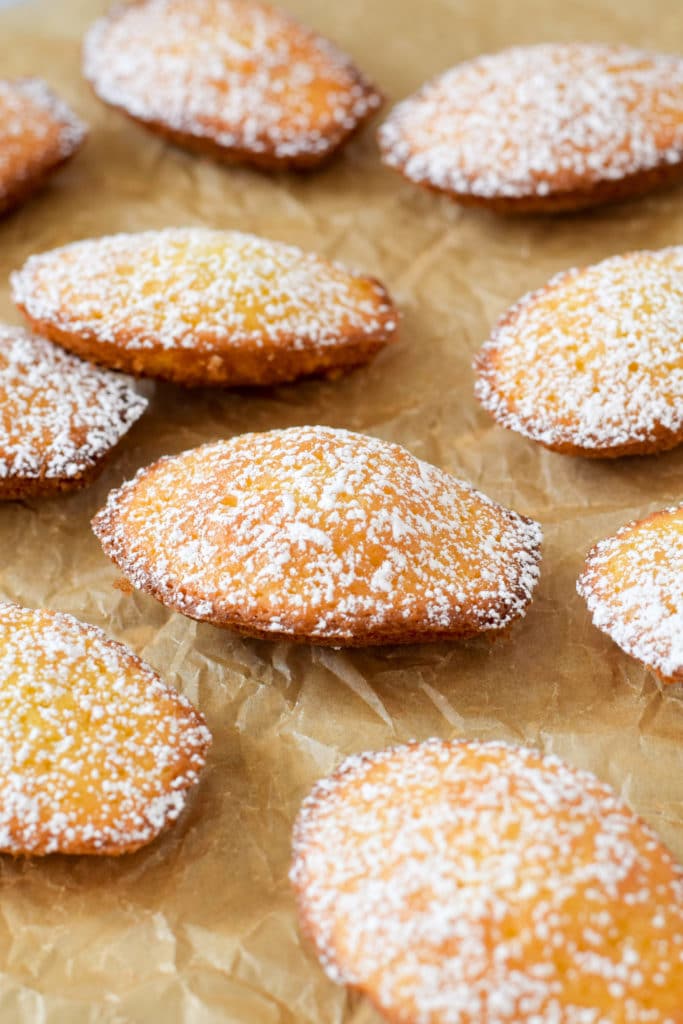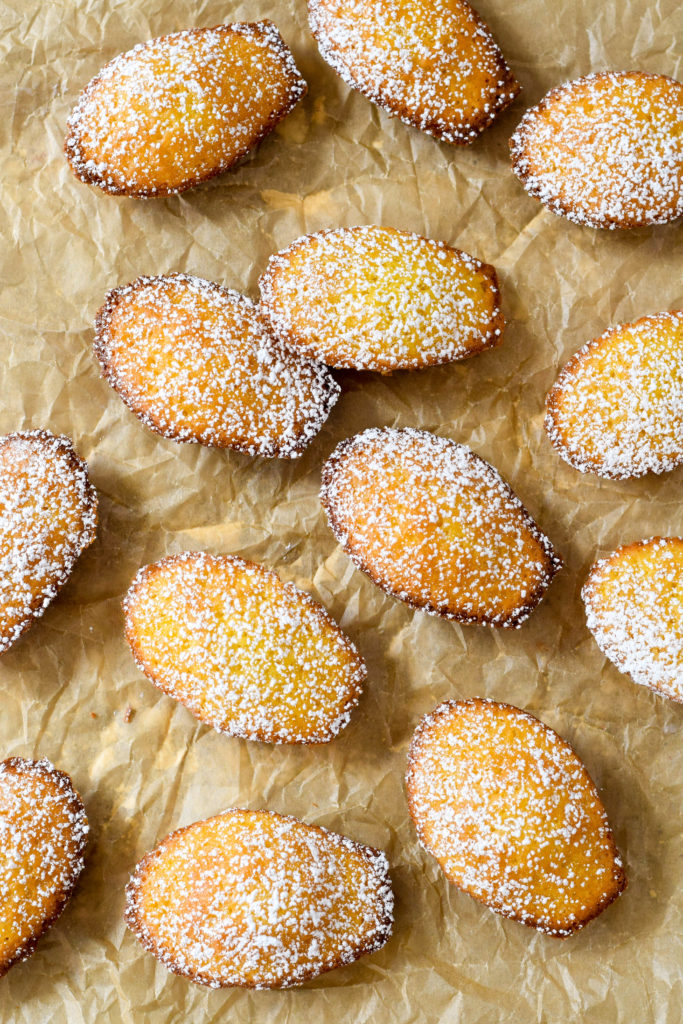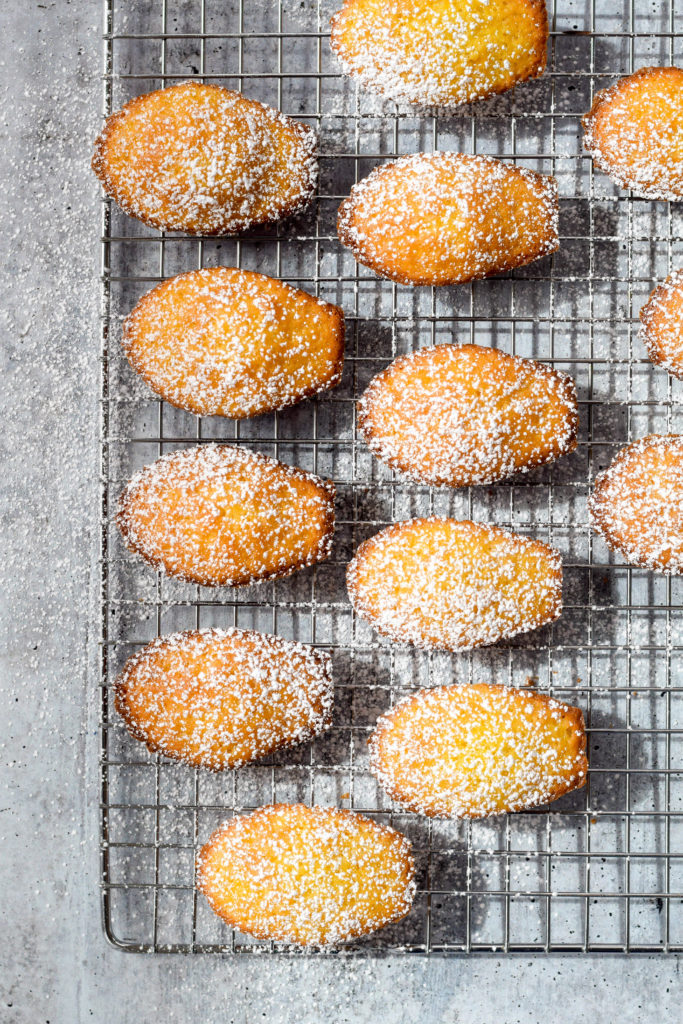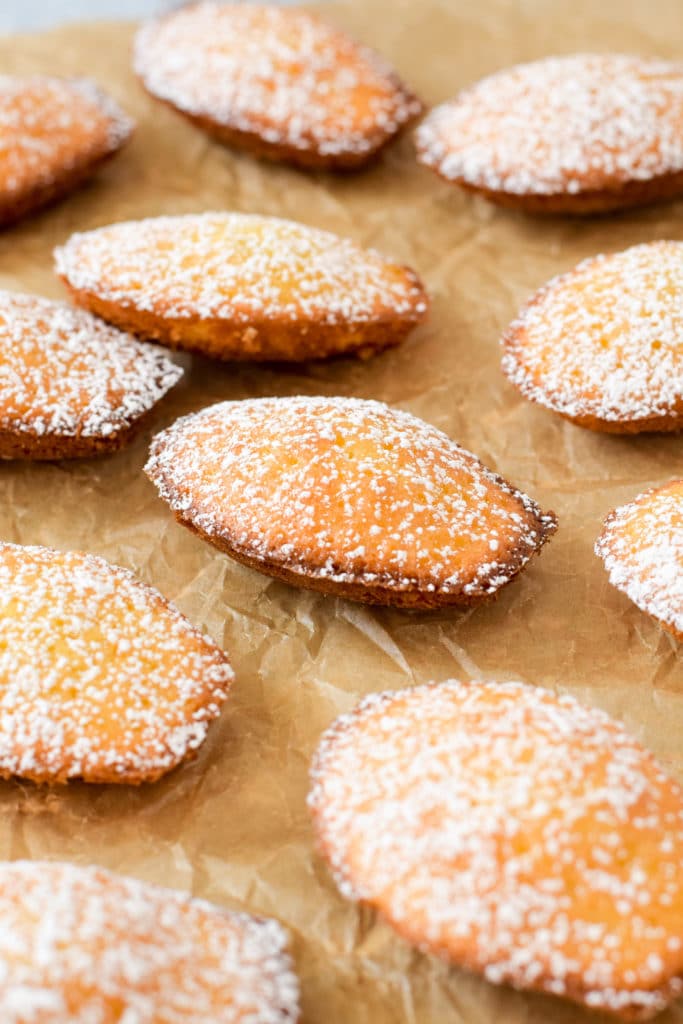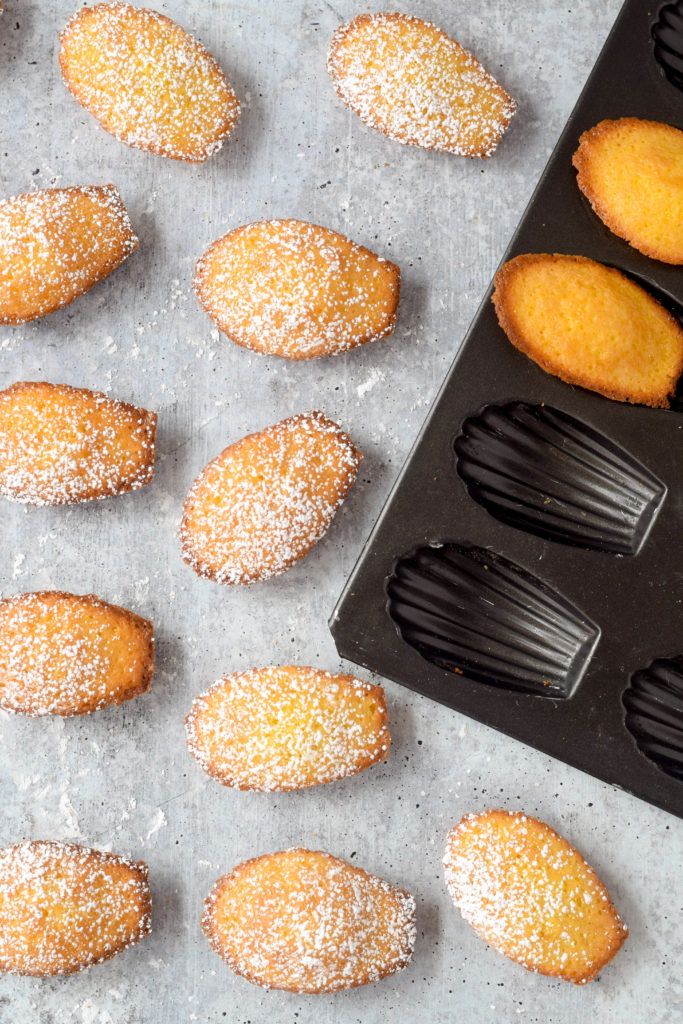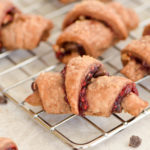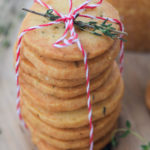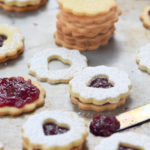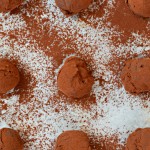Learn how to make madeleines – the delicate, buttery French cakes with the iconic scallop shape. So much better than the Starbucks version! A perfect shelter-in-place baking project.
There’s a lot of mythology surrounding madeleines. Most famously, it was a bite of these little cakes – or are they cookies? – dipped in tea that triggered a powerful sense memory for writer Marcel Proust and allowed him to write his multi-volume masterpiece In Search of Lost Time:
And suddenly the memory revealed itself. The taste was that of the little piece of madeleine which on Sunday mornings at Combray (because on those mornings I did not go out before mass), when I went to say good morning to her in her bedroom, my aunt Léonie used to give me, dipping it first in her own cup of tea or tisane.
Literary pedigree aside, madeleines are also notorious for 1) being difficult to make and 2) for being at their best when freshly made – even more so than most things. That’s why several well-known restaurants, such as St. John in London, send their guests home with a little brown paper sack of hot-from-the-oven madeleines. Right out of the pan, a madeleine has delicately crisp edges and a tender crumb and tastes oh-so-buttery. They never fail to impress.
If you have only ever had pre-packaged madeleines – like the ones they sell at Starbucks – you may wonder what all the fuss is about. Or you may see the necessity of dipping madeleines in tea, for the packaged versions are often bone-dry. (Nevertheless, my son loves the Starbucks ones, so go figure.) Before you dismiss madeleines as nothing special, you must try a freshly baked one. Even it is means baking them yourself.
Yes, you need a special pan. And this pan does nothing else other than make madeleines. If that is a deal-breaker for you, I get it. But really, madeleine pans are not hard to find and they are not expensive. So, while you are at it, get two. It will make this process that much easier.
When I was in Paris last summer with my mother and my daughter – a trip I am so, so grateful we took given what is happening in the world right now – I made the mistake of only buying one madeleine pan when we visited the famous French cookware store E.Dehillerin. Almost every recipe for madeleines, including the one I am going to give you, makes at least 2 dozen cakes (cookies?) which means rebuttering and chilling the pan between batches – unless you are lucky enough to have two.
The Holy Grail for the madeleine-maker is the iconic hump or bump on the top of the cookie (small cake?). If your madeleines come out flat, sure, they will still taste lovely, but the perfectionist in you will know that they just aren’t right. But if you achieve that perfect bump (or hump), you will feel like the pastry gods have smiled on you and you will burst with pride. And Instagram it for posterity.
I have made many batches of madeleines this winter, including some for my daughter’s French class baking contest, and I have identified three keys to madeleine success. One, make the batter the day before you plan to bake the madeleines. Two, freeze the madeleine pan (or pans.) Three, do not overfill the molds. That last one is harder than it sounds. I really have to resist the temptation to add more than a tablespoon of batter to each little scallop shape. But when I add too much, the madeleines spill over the sides or end up with a divot where they should be a bump and I am overcome with despair. (Slight exaggeration.)
I learned a lot of my madeleine-baking techniques, including freezing the madeleine pan, from this helpful post on The Kitchn. But my recipe is more influenced by the one in the new cookbook The Book of St. John, from the London restaurant of the same name.
A few weeks ago, my friend Liz and I went to a pop-up dinner at the Hoxton hotel here in Chicago celebrating the release of this book, and the 25th anniversary of St. John, with the chef Fergus Henderson and sommelier Trevor Gulliver who had come over from London. (Again, it was only a few weeks ago, but it feels like a different world.) The set menu of a select few classic St. John dishes was mind-blowing, from the marrow bone appetizer to the ox cheek and pickled walnut pie in suet crust (!) to the dessert of île flottante.
And, of course, the final bite of the night was the amazingly buttery, not-too-sweet St. John madeleines. I was so happy when I saw that the madeleine recipe was in the book and knew I could recreate them at home. (And the île flottante recipe too. Get ready for that, family.)
There are a few idiosyncracies to the St. John madeleine recipe that I have tweaked here and I definitely disagree with that recipe’s lack of citrus. I think madeleines need a citrusy note, which is achieved by the addition of lemon or orange zest, or even both. One important note: the St John recipe calls for self-rising flour, which is used a lot in British kitchens, but less so in American ones. If you have some, or can source it, terrific. (In a time when regular all-purpose flour is hard to come by, it might actually be easier to find the self-rising kind.) If not, you can easily make your own by mixing one cup of regular flour with 1/2 teaspoon of salt and 1 1/2 teaspoons of baking powder.
If you are intrigued by this project but worried about polishing off two dozen madeleines by yourself while engaging in social distancing during a pandemic, let me remind you that restaurants give out little bags of madeleines as a farewell for a reason. These make a delightful edible gift. We packaged our extra madeleines in bags of four and my husband delivered them to nearby friends – leaving the bags on their porches, naturally. It was a nice excuse to get out of the house and our friends appreciated the treat.
Ingredients
- 10 TB butter, divided
- 2 TB honey
- 1/2 cup sugar
- 2 TB brown sugar
- 3 eggs
- Zest of one lemon or 1/2 of an orange or some combination thereof
- 1 scant cup self-rising flour (see note in post) plus extra for dusting the pan
- Powdered sugar
Instructions
- Combine 9 TB of the butter and honey in a small saucepan and melt over medium-low heat, stirring to dissolve the honey. (If you are comfortable doing so, feel free to brown the butter for extra flavor, but it is not necessary.) Set aside and allow to cool.
- Add the sugars and eggs to the bowl of a standing mixer and using the whisk attachment, whisk on medium-high heat until very light in color and batter dropped on the surface leaves a trail, about 8 minutes.
- Gently fold in the citrus zest and flour by hand followed by the melted butter-honey mixture.
- Cover and chill batter overnight.
- Prepare the madeleine pan or pans by melting the remaining tablespoon of butter and buttering the molds using a pastry brush. Dust the buttered molds with flour and place the pan or pans in the freezer until chilled or overnight.
- Preheat the oven to 350.
- Spoon one tablespoon of batter into each mold. Do not overfill. Bake for 12-14 minutes until the edges are golden brown and the top just firm. Allow the madeleines to cool in the pan, then use a fork or a sharp knife to loosen the edges and gently lift the cakes from the pan. Cool cakes on a wrire rack.
- If working with only one pan, keep the unused batter in the fridge while the first pan is baking. Once you have removed the first batch of madeleines from the pan, butter and flour it again and return it to the freezer until chilled before filling the molds with the remaining batter. Repeat baking process until you have used all of the batter.
- Dust the cooled madeleines with powdered sugar and enjoy as soon as possible.
